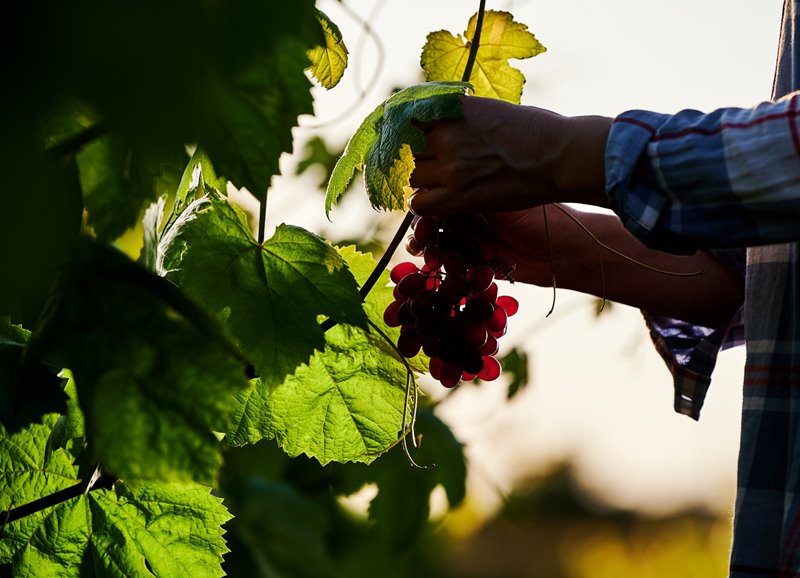The Challenges of Viticulture: Addressing Pests, Diseases, and Weeds in Vineyards
The Ever-Present Adversaries of Grapevines

In the intricate world of viticulture, the cultivation of grapevines for wine production, vineyard managers and vintners face a multitude of challenges. Among these, the presence of pests, diseases, and weeds stands as a constant threat to the health and productivity of the vines. These adversaries can significantly impact both the quantity and quality of the grape harvest, posing a serious concern for the wine industry.
Grapevines, by their nature, are particularly susceptible to various pathogens. This vulnerability increases with the delicacy of the grape variety. Throughout history, several diseases have notably affected vineyards worldwide. In the latter half of the 20th century, diseases like powdery mildew and phylloxera had a considerable impact in Europe. More recently, the emergence of viral diseases and issues caused by mites have gained prominence in the global viticulture scene.
In response to these challenges, there is a growing emphasis among farmers on prioritizing physical and cultural methods over chemical control to combat these vineyard adversaries. This approach aims to minimize the environmental and health impacts associated with the use of phytosanitary products, promoting more sustainable and responsible vineyard management.
Key Pests in Vineyards
- Acarosis (Calepitrimerus vitis Nal.): A mite that can cause significant damage to grape leaves.
- Erinosis (Colomerus vitis Pgst.): Another mite that affects the foliage of grapevines.
- Common Spider Mites: Including the common yellow spider mite (Tetranychus urticae Koch) and the rust mite (Brevipalpus lewisi McGregor).
- Grape Berry Moth (Lobesia botrana Den. and Schiff.): A significant pest that damages grape clusters.
- Thrips (Frankliniella occidentalis Perg.): Tiny insects that can affect the quality of the grape skins.
- Wood Borers (Xylotrechus arvícola Oliv.): Insects that bore into grapevine wood, weakening the plant structure.
Common Diseases in Vineyards
- Downy Mildew (Plasmopara viticola Berl. and de Toni): A fungal disease that can devastate grape leaves and fruit.
- Powdery Mildew (Unicnula necator B.): A widespread fungal disease affecting grapevines.
- Gray Mold (Botrytis cinerea PERS.): A fungus that can cause significant losses, especially in humid conditions.
- Black Rot (Guignardia bidwellii Ellis.): A fungal disease that can ruin grape clusters.
- Phomopsis Cane and Leaf Spot (Phomopsis viticola Sacc.): A fungal disease that affects the canes and leaves.
- Wood Fungi: Fungi that decay the wood of grapevines.
- Root Rot (Armillaria mellea Vahl): A disease that affects the roots and base of the vine.
- Bacterial Necrosis (Xylophilus ampelinus): A bacterial disease that can cause significant vine damage.
- Grapevine Tumors (Agrobacterium sp.): Bacterial infections that cause growths on vines.
- Various Viruses: Including leafroll and golden flavescence.
Common Weeds in Vineyards
- Lamb's-quarters (Chenopodium album L.): A common weed in vineyards.
- Thistle (Cirsium arvense l.): A persistent weed that competes for resources.
- Field Bindweed (Convolvulus arvensis): A vine-like weed that can overtake grapevines.
- Bermuda Grass (Cynodon dactylon): A grass that can be difficult to control.
- Ryegrass (Lolium rigidum): A weed that competes with vines for nutrients.
- Johnson Grass (Sorghum halepense): A tall, aggressive weed.
Managing these pests, diseases, and weeds is crucial for ensuring the sustainability and quality of wine production. Ongoing research, coupled with the adoption of innovative and sustainable agricultural practices, is key to addressing these challenges and ensuring the health and productivity of vineyards in the future.
Founded in 2007, Vinetur® is a registered trademark of VGSC S.L. with a long history in the wine industry.
VGSC, S.L. with VAT number B70255591 is a spanish company legally registered in the Commercial Register of the city of Santiago de Compostela, with registration number: Bulletin 181, Reference 356049 in Volume 13, Page 107, Section 6, Sheet 45028, Entry 2.
Email: [email protected]
Headquarters and offices located in Vilagarcia de Arousa, Spain.